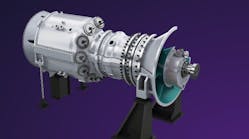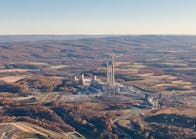H2 Takes a Hit in Europe: Norway's Statkraft Halts New H2 Project Development
Norwegian power generation giant Statkraft’s enthusiasm for hydrogen as part of its new energy projects will now take a back seat due to increased uncertainties in that market.
The company announced this past week it was ceasing development of new green hydrogen projects but continuing with some already existing plans in pre-investment phases.
Hydrogen does not contain carbon in its molecular chain so does not emit carbon dioxide when combusted, but to be classified as green and truly carbon-free hydrogen it must be created by electrolyzers powered with renewable or nuclear energy. Companies around the world are working on scaling up green hydrogen projects.
Statkraft has been working on green hydrogen infrastructure for years, including in Norway, Sweden and elsewhere in Europe. The company’s credit rating, however, took a hit earlier this year when S&P Global Ratings revised Statkraft’s outlook on its A credit rating from stable to negative based on weaker financial performance last year.
Developing the early days of a green hydrogen infrastructure is risky and expensive.
“After reducing the ambition level on green hydrogen development last year, we are experiencing even more uncertainty in the market,” said Birgitte Ringstad Vartdal, President and CEO of Statkraft, in a statement last week. “Therefore, Statkraft has decided to stop new development of green hydrogen and going forward we will prioritise growth opportunities in other technologies, and market operations.”
The company is deeply engaged in renewable energies, mainly hydropower projects, as well as district heating plants in Norway and Sweden.
Hydrogen is Still Attracting Investment Worldwide: Read More
H2 Infinity and Beyond: EnergyTech's Free E-Book
Hydrogen, which is a light and energy-dense gas known by the chemical formula H2, is envisioned by many as a future fuel to ensure baseload and decarbonized power generation for intensive industrial use.
The gas, however, is not naturally mined despite its abundance in nature. Most industrial-scale hydrogen is produced by steam reforming of methane gas, which is carbon intensive, but H2 also can be a store of ammonia and blended into e-kerosene which can be utilized in maritime transportation fuels once the infrastructure logistics are scaled up.
The International Energy Agency has forecast that a projected $320 billion capital investment in hydrogen development will be required to meet the previous decarbonization goals set for 2030.
Bloomberg NEF has reported that the cost of green hydrogen will be much higher than it previously anticipated. In 2023 BNEF estimated that green hydrogen would fall below $2 per kilogram in most major markets by 2037, but later revised those forecasts upward to $3 and $4 per kilogram, saying that the $2 goal would not be realized until mid-century and in only a few markets.






